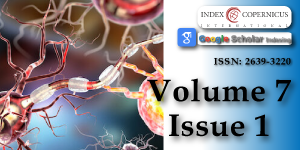Case study (A and B): a patient with Parkinson’s disease
Main Article Content
Abstract
Parkinson’s disease is a progressive and debilitating neurodegenerative disorder affecting millions of people worldwide. The disease is characterized by motor symptoms such as tremors, rigidity and postural instability, as well as non-motor symptoms such as depression and cognitive impairment. While there is no cure for Parkinson’s disease, there are various treatments available to manage symptoms and improve quality of life for patients.
This case study examines a 65-year-old retired accountant, Mr. John Smith, who was diagnosed with Parkinson’s disease five years ago. Mr. Smith has been treated with a combination of medications, including levodopa and carbidopa and physical therapy to manage his symptoms. However, his symptoms have not significantly improved.
This literature review explores the current research on Parkinson’s disease, including its pathophysiology, diagnosis and treatment. Parkinson’s disease is caused by the degeneration of dopamine-producing neurons in the brain, leading to a depletion of dopamine and the accumulation of alpha-synuclein protein, oxidative stress and inflammation. Diagnosis is based on clinical symptoms, neurological examination and response to dopaminergic therapy. Treatment focuses on managing symptoms, with medications and non-pharmacological interventions such as exercise and physical therapy. Deep brain stimulation is a surgical treatment option that has been shown to be effective in managing motor symptoms.
While there is currently no cure for Parkinson’s disease, ongoing research into its pathophysiology and treatment holds promise for improving outcomes for patients. This case study highlights the importance of early diagnosis and personalized treatment plans for patients with Parkinson’s disease.
Article Details
Copyright (c) 2023 Hasan MZ, et al.

This work is licensed under a Creative Commons Attribution 4.0 International License.
American Parkinson Disease Association (n.d). Parkinson's disease. https://www.apdaparkinson.org/parkinsons-disease/
Parkinson's Foundation. (n.d). Parkinson's disease treatment. https://www.parkinson.org/Understanding-Parkinsons/Treatment
National Institute of Neurological Disorders and Stroke. (n.d). Parkinson's disease information page. https://www.ninds.nih.gov/Disorders/All-Disorders/Parkinsons-DiseaseInformation-Page
Fahn S, Elton RL. Principles of assessment and management of Parkinson's disease. New England Journal of Medicine. 1987; 316(7):437-447.
National Institute of Neurological Disorders and Stroke. Parkinson's disease information page. 2020. https://www.ninds.nih.gov/Disorders/AllDisorders/Parkinsons-Disease-Information-Page
National Parkinson Foundation. Parkinson's disease: Treatment. 2020. https://www.parkinson.org/understanding-parkinsons/treatment.
American Academy of Neurology. Parkinson's disease: Diagnosis and treatment. 2018. https://www.aan.com/guidelines/parkinsons-disease/

